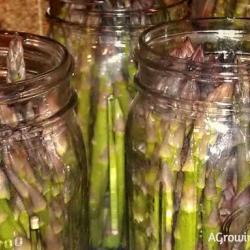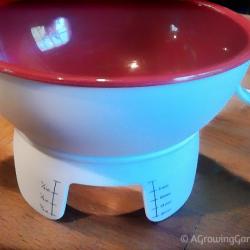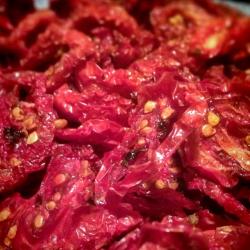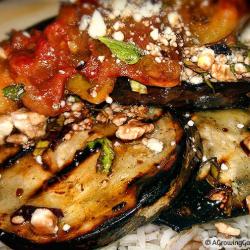
My sweet and hot peppers are both doing absolutely, positively fantastic this year. I have no idea why. I haven't really done anything differently from past years, but the plants are super huge, very healthy, and chock full of fruit.
Peppers out the wazoo!
I already have an onslaught of peppers taking over my kitchen & it's only early August.... wonder what's going to happen in September, when the peppers usually really start coming in?
Rather than eating salsa everyday (which I still might do!), I thought I'd use some of my hot peppers now to try my hand at making some Louisiana style hot sauce. We go through a lot of hot sauce in our house and I figure that if I can perfect my recipe now, I'll be set for brewing up bottle after bottle of the stuff in the fall.
If you look around online and in books, you'll find all sorts of ways people make hot pepper sauce -- some ferment the peppers in a salt brine, others use vinegar, some chop and cook the peppers, some chop and make a mash of fresh peppers, some include tomatoes, and others include garlic and other herbs and spices. I even came across recipes where people blended all sorts of fruits and vegetables with peppers to make "more complex" blends.
But, I decided to stick with something simple to start and, after considerable research on the various methods for making homemade hot sauce, I opted for a salt brine fermentation technique ... it seems the most authentic and most like a traditional Louisiana hot sauce.
Although it sounds a bit scary and primitive, with fermentation, micro-organisms "preserve" the food for you. You add salt in order to stop dangerous micro-organisms from growing and allowing the good micro-organisms to flourish and grow. Then the good micro-organisms convert the food into alcohol or acid and keep it from rotting. Or at least that's the theory anyway!
Basically, the technique I used in my first batch included chopping the peppers into a mash, adding salt, adding a little white wine to cover the mash, covering the concoction with a cloth, and letting it ferment at room temperature for a few weeks. Then, when it's finished fermenting, you strain it, add a little vinegar, bottle it, and refrigerate it.
Sounds easy enough, right?
Well, we'll see! I started my first batch last night and I'll be looking forward to seeing the fermentation bubbles start soon (a sure sign that it's starting to work).
Of course, as with any type of food preservation, you need to be really careful to ensure that the food is safe, so it's a very good idea to make sure you understand everything about it before you dive in. If you are interested in learning more about it, Amazon.com has a ton of books on fermenting food & resources for getting started!












Join the Conversation!